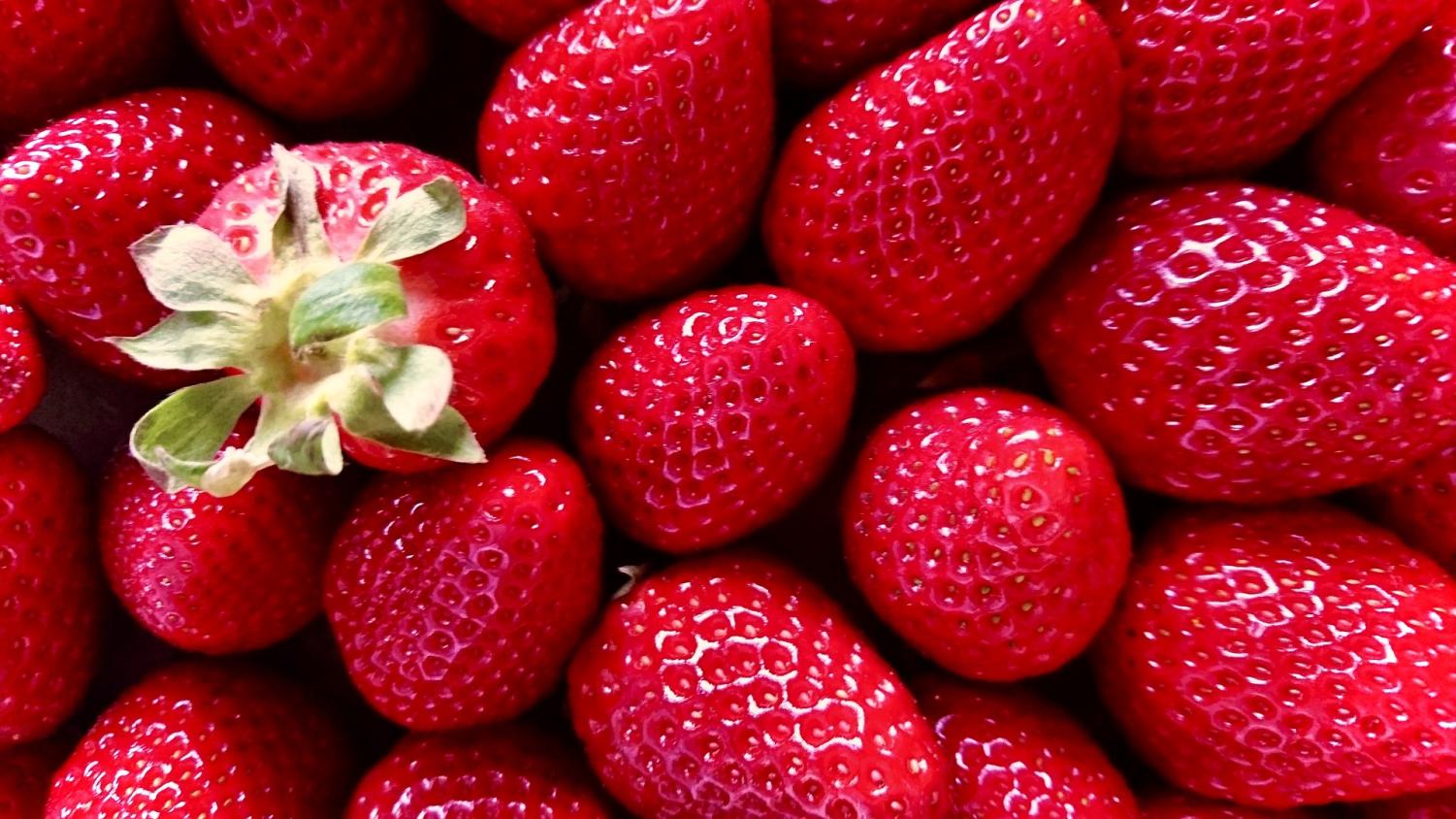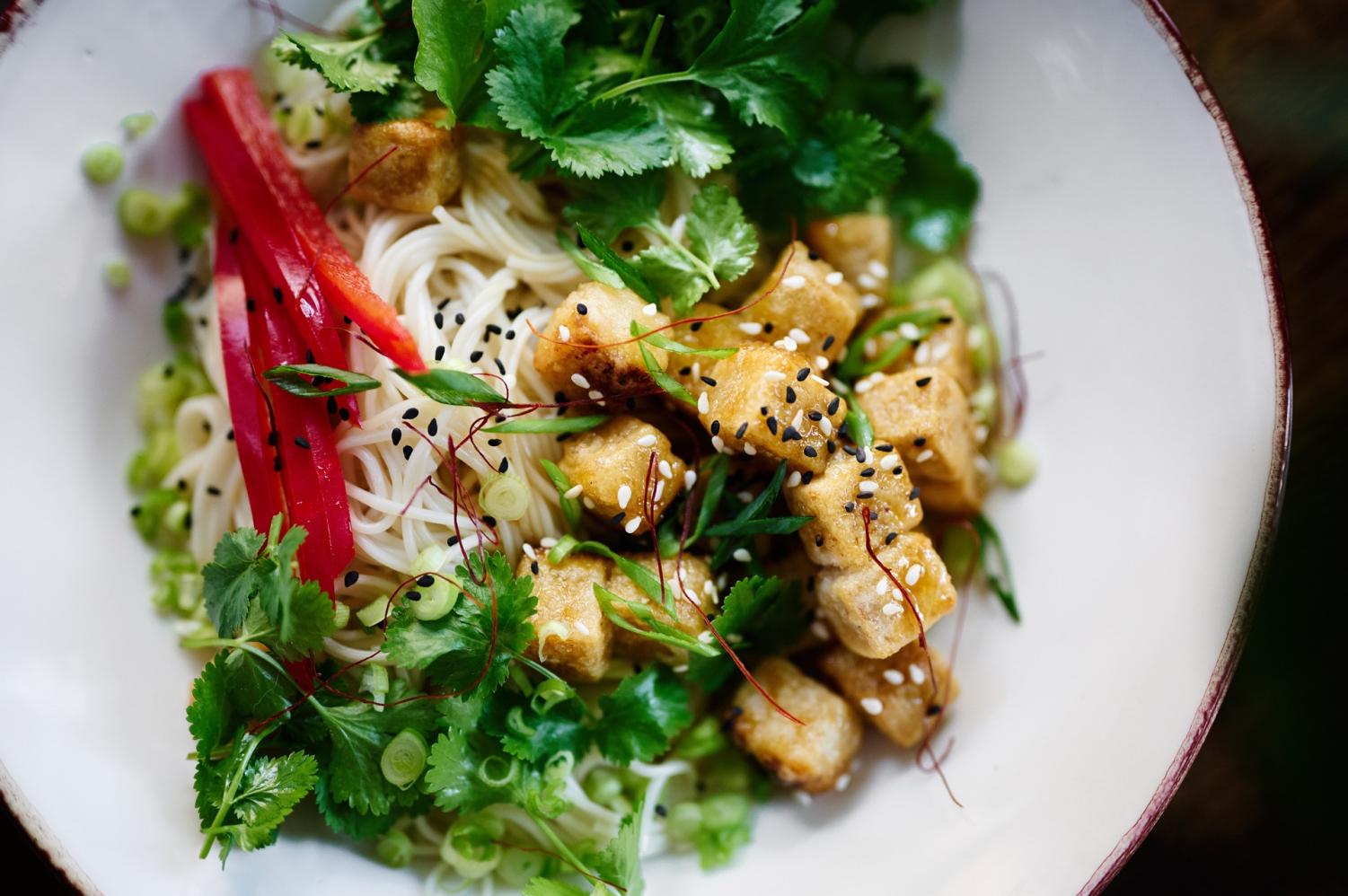Adding More Plants To Your Plate: Where To Start And Why You Should
Image by Fuzzy Rescue from Pixabay
Plant-based does not mean eating entirely vegan; it simply means adding in more plants to your diet! Looking to increase your plant consumption? Try adding three new plant-based foods to your grocery cart during your next shop!
New Year’s resolutions – the time of the year where many people plan to improve their overall well-being. Oftentimes, people will make resolutions around fitness and food, intending to better their health, but these resolutions sometimes become too rigid and unattainable. Living a healthy lifestyle is not one size fits all, nor is it all or nothing. Health is all about balance, and this can look like adding more color to your meals and going for more walks, while still remembering that eating a cookie for dessert and relaxing on Sundays is not going to make or break your health. By incorporating healthful habits into your lifestyle one step at a time, you will not only improve the quality of your life, but avoid the stresses of feeling like you need to stick to a strict, diet culture-esque 30 day “health cleanse” that promotes practices that are anything but healthy.
So you want to start incorporating more healthy habits into your lifestyle but do not know where to begin? Well, there is no better place to start than by adding more plant-based meals into your diet, and there is no better time to start than now.
Now, committing to plant-based eating entirely is not the main goal here. If anything, trying to transition to completely plant-based if you regularly consume animal products can be far too stressful. And adding more stress to your life is the complete opposite of what these healthful habits are designed to do. So, instead, setting the goal of incorporating more plant-based meals into your lifestyle will help you achieve the benefits that come with eating more plants, without forfeiting your usual diet. This can look like having meatless Monday dinners, having one plant-based meal a day, or whatever practices are attainable for you to commit to.
Now before going into ways you can add more plants into your diet, it is important to understand why this is a great goal to have. Here is a list of some of the benefits of eating more plant-based:
Variety of Nutrients
The body loves variety. By eating a variety of plant based foods like fruits, vegetables, nuts, seeds, and whole grains, the body is getting an array of vitamins and minerals, overall helping you absorb a plethora of micronutrients. This is where the saying “eat the rainbow” stems from, as each different color of food actually offers a range of different health benefits. And as Rush University Medical Center explains, “The most vibrantly colored fruits and vegetables are the richest in vitamins, minerals, fiber, and antioxidants.” For example, red foods such as strawberries and red beans are filled with vitamin A, vitamin C, and potassium, while blue and purple foods such as eggplant and grapes “boost urinary tract health and memory function and promote healthy aging.”
Boost Your Immune System

Many plant based foods contain vitamins and nutrients packed with antioxidants that help to support the immune system. As explained by the Cleveland Clinic, vitamin C has been shown to “protect the body from toxins that cause inflammation” and a deficiency of vitamin C can actually make you “more prone to getting sick.” Vitamin C can be found in fruits and vegetables like red bell peppers, oranges, and brussel sprouts.
Similarly, vitamin E helps the body fight off infections, making it a key nutrient in improving your immunity. Vitamin E can be found in plant foods like seeds, nuts and nut butters, and spinach. Zinc is yet another antioxidant that is “responsible for making all your immune cells function properly.” This powerful mineral can be found in plant foods such as legumes and seeds like pumpkin. Selenium kills two birds with one stone: it not only kick-starts the immune system when it senses a threat, but it also tells the immune system when to slow down, protecting the body from autoimmune diseases and chronic inflammation. Lettuce Veg Out lists out an array of plant based foods that contain selenium, with whole grains like couscous and wheat germ and soy products like tofu having the highest levels.
Reduce Inflammation
Inflammation is the body’s response to anything it senses as a threat; Dietitian Lindsey Wohlford at MD Anderson explains how these threats can be toxins, allergens, bacteria, and even certain types of foods. Wohlford explains how prolonged or increased inflammation can increase your risk of disease, worsen existing illness, and even cause cell damage. But do not worry, there are many nutrients that can help fight inflammation, and many happen to be found in plant based foods. Walnuts, flaxseed, and heart-healthy oils like olive contain omega-3 acids, which have been proven to reduce inflammation. Vitamins E and C have also shown to fight inflammation, and can be found in different sources of produce. Prebiotic and probiotic foods can also reduce inflammation as they help support a healthy gut. Probiotic foods like tempeh, sauerkraut, and sourdough bread contain the healthy bacteria needed for the gut, and prebiotic foods like asparagus, artichokes, and oats help promote the growth of this bacteria.
Plants Contain Fiber
Meeting your fiber needs can have a significant impact on your health, and in a great way. Fiber is a type of carbohydrate the body does not digest. As explained by the Mayo Clinic, fiber passes “intact through the stomach, small intestine, colon, and out the body.” There are two types of fiber, soluble and insoluble. Soluble fiber dissolves in water to form a gel-like material that can help to lower cholesterol and balance glucose levels. Soluble fiber also helps to keep you feeling fuller for longer. This kind of fiber can be found in foods like oats, legumes, and citrus fruits.
Additionally, insoluble fiber increases stool bulk, which ultimately promotes better movement in the digestive system. Insoluble fiber, which can be found in foods like whole grains and potatoes, can benefit those who struggle with bowel issues greatly.
Improved Overall Health
Adding more plants into your diet can ultimately lead to less health risks, boosting your overall well-being. According to dietitian Maya Feller, while your plate does not have to be strictly plants, everyone can benefit “‘from the health effects of increasing the proportion of plants on their plates.”” What are these health effects exactly? Everyday Health lists out various scientifically proven benefits to incorporating more plants into their diet including: reducing blood pressure, which ultimately reduces the risk of “health issues including heart disease, stroke, and type 2 diabetes,” reducing the risk of developing cardiovascular disease as plants have anti-inflammatory properties, and decreasing the risk of cancer as plants contain many cancer-protective nutrients, helping lower LDL cholesterol (or the “bad” cholesterol) levels. Incorporating more plants into your diet long term has also proven to lower “the risk of all causes of mortality by 25 percent” and slow the progression of Alzheimer’s as plants are rich in polyphenols, compounds that may help to “reverse cognitive decline.” In fact, studies have found that adding just an extra one-half cup serving of fruits or vegetables to your plate each day has led to a “13 percent reduction in the risk of cognitive impairment and dementia.”
How To Add More Plants To Your Plates

Now that you know the benefits of eating more plants, it’s time to figure out where to start. It can seem overwhelming at first, trying to figure out what to eat and what to cook, but with the guidance of these following tips, you will be a master at adding plants to your plate in no time:
Do Not Fear Trying New Foods
Plant based foods are not just sold in stores for vegetarians and vegans; so, yes, you can still eat tofu even if you also consume meat. Soy products like tofu and tempeh, lentils, and beans are all nutritional powerhouses that can help bring lots of variety to your diet. While foods like tofu may not appear as the most appetizing, when they are prepared right, they can be packed with flavor. Simply researching some recipes online before cooking is a great way to have a plan with your new foods, and make their first impression on you a tasty one. From taking in micronutrients you may not be eating on a regular basis to just enjoying new tastes on your plate, have fun in the kitchen and experiment with some plant based foods you always pass in the store but never think to cook with.
Substitute For Meat
Want to partake in a Meatless Monday? Or simply looking to cut back on your meat consumption throughout the week? Well you are in luck; many plant based foods can actually be substituted in many meat recipes, providing you with a meatless option for your favorite meals. Cooking up a bolognese sauce for Sunday night pasta dinners? Swap the beef for lentils in this Lentil Bolognese. Make a batch of plant based burgers like these Chickpea Black Bean burgers and freeze them for whenever you need a quick burger night dinner. Replace the chicken in a classic orange chicken dish with tofu in this recipe. Remember, just because a meal is traditionally made with meat does not mean plant based options cannot be substituted in.
Get Familiar With Your Grocery Store
Between school and work and finding times to do the things we enjoy, it is safe to say we are busy people. So, while it may sound fun to head on over to your local Whole Foods to spend the day exploring and purchasing a plethora of colorful produce and plant based products, this fantasy is not realistic (nor affordable) for many. But the good news is that you do not need to go to an expensive store nor spend hours grocery shopping to incorporate more plants into your diet. The magic can happen at your local grocery store. With a little extra checking between shelves and heading down aisles that are not typically one you shop in, you will be pleasantly surprised to find that many plant based products are actually available at your local grocery store, and are much more affordable as well. Find pulse-based pasta in the Italian sections. Keep an eye out for edamame in the freezer section or a dried version by the nuts and seeds. Seek out some nutritional yeast in the spice aisle.
Set Weekly, Realistic Goals
Adding more plant-based eating into your life does not have to be all or nothing. Small steps are still steps, and the little things add up overtime. Maybe you start with the goal of adding two different colors to your dinner plate each night. Or maybe you buy three new plant-based foods on Sunday and incorporate them throughout the week. While it may not seem like much, overtime, you are going to be taking in a wider variety of nutrients, vitamins, and minerals you may not have been getting enough of (or any) before.
Follow Plant-Based Food Bloggers And Dietitians
Learning how to incorporate more plants into your diet can be a bit overwhelming, but a little guidance can help send you in the right direction. Following some plant-based food bloggers is a great way to not only get some recipe inspiration, but to learn what flavors pair well with certain plant-based foods as you introduce new ones into your lifestyle. Let’s be honest; it is not common knowledge that tempeh goes perfectly with a peanut sauce or that lentils make a great addition to a rice bowl, but food bloggers most definitely will! Following Registered Dietitians can also be beneficial to learn more about the nutrition of plant-based eating. RDs can help you learn about what nutrients are in certain plant-based foods, the benefits different plants have on the body, how to utilize plants to make more balanced and satiating meals, and more science related information! Check out Kelly Jones or Catherine, two plant forward RDs who will bring you both the facts and delicious recipes.
There is no denying that eating more plant based foods will positively impact our overall health and well beings. Enjoying more plants does not mean ditching all animal products, but rather means finding a balance between the two. Think about what you can add, not take away. Maybe this means having Tofu Thursdays or choosing a plant-based milk like soy to add to your coffee in the morning instead. Whatever this balance may look like for you, have fun experimenting in the kitchen with some new recipes and making your body (and taste buds) really happy with many colorful nutrients!

Morgan is a senior at Lakeland, and is beyond excited to be this year’s Editor-in-Chief for The Lancer Ledger. This is her fourth year writing for the...







